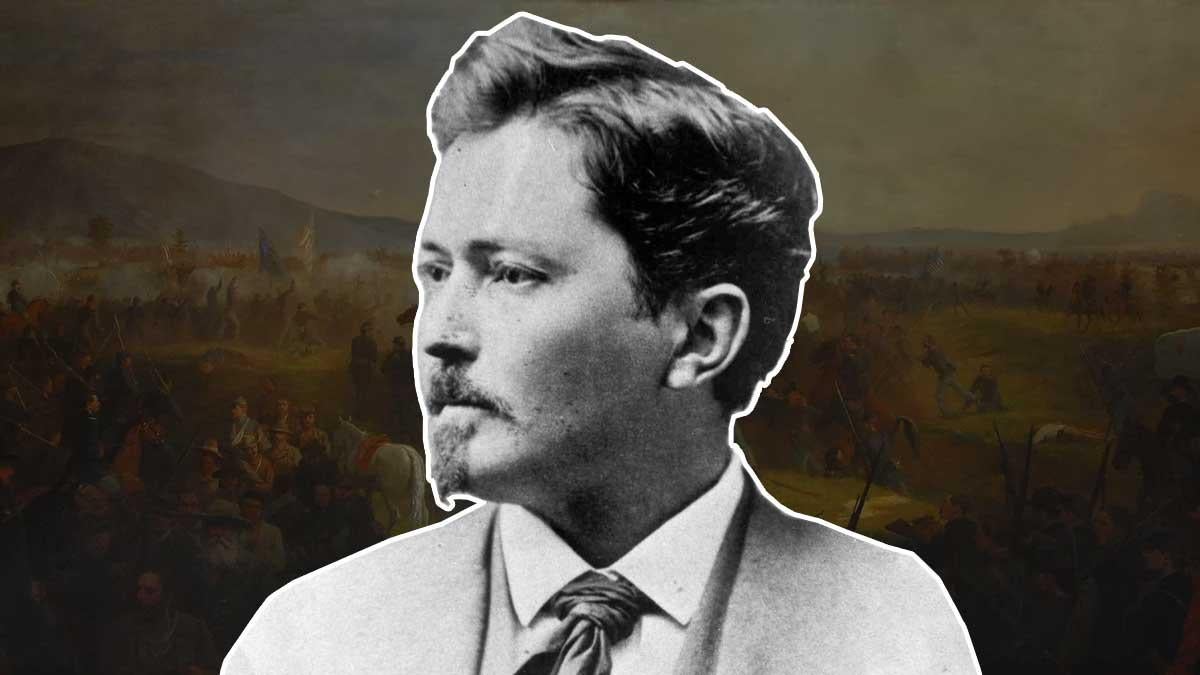
By 1901, Julian Scott had traveled to Europe and the American frontier, cultivating an international artistic reputation. These are all high achievements, but Scott’s grandest accolade, the Medal of Honor, came when he was only a teenager.
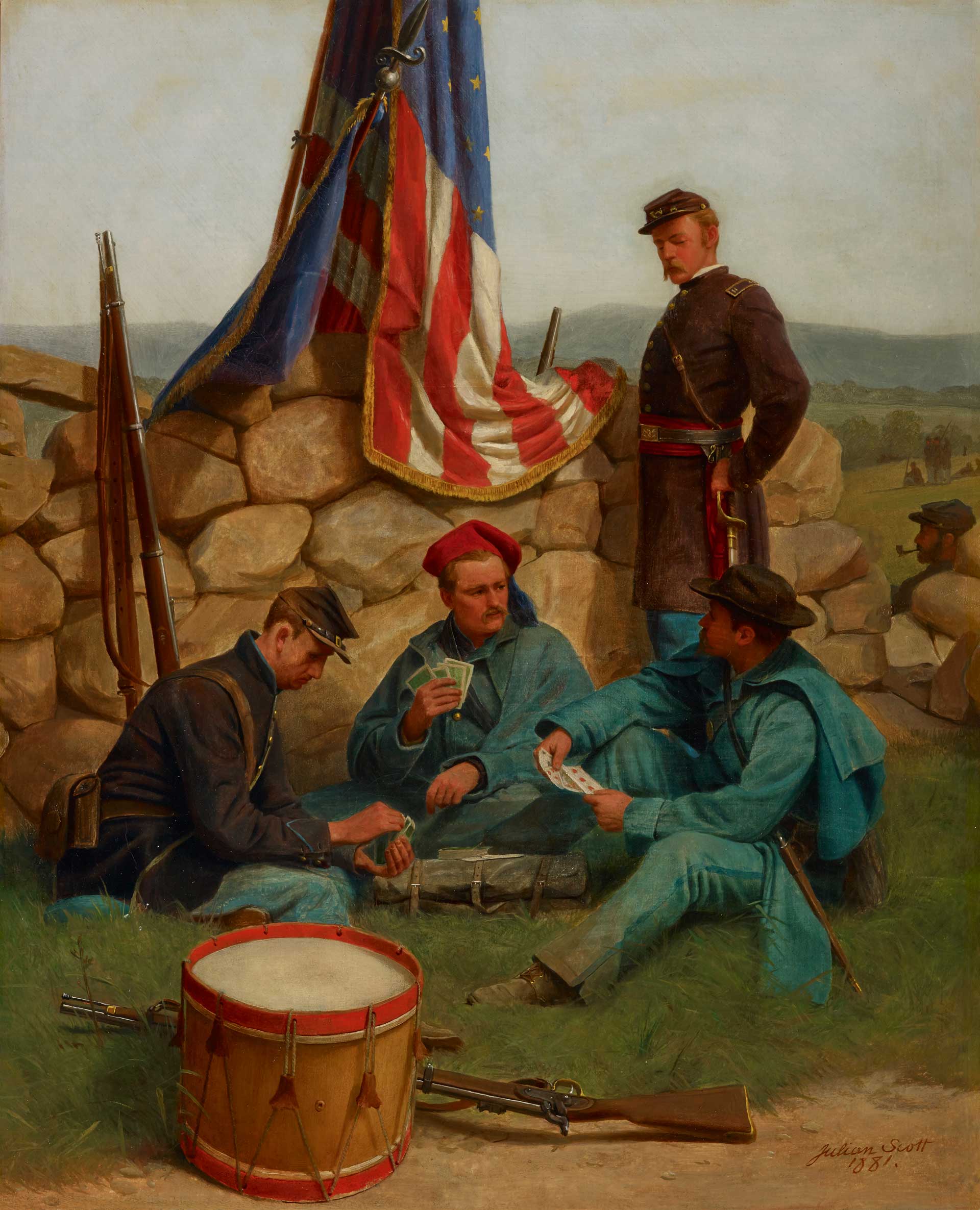
JULIAN SCOTT, A BREAK PLAYING CARDS, 1861, OIL ON CANVAS. PHOTO CREDIT: INDIANAPOLIS MUSEUM OF ART.
The fourth child of eight to be born to a clockmaker, Julian Scott enlisted in the 3rd Vermont Infantry on June 1, 1861. Only 15, and following in the footsteps of his older brother, he worked as a fifer and drummer between 1861 and 1863. But less than a year into his volunteer enlistment, Scott’s mettle was put to the test at the Battle of Lee’s Mill.
The battle was a skirmish that took place within the larger context of the Siege of Yorktown — one which was tragic for the two Vermont regiments that were tasked with prodding the highly fortified Confederate defenses. The Union soldiers waded through creek and river crossings and were assailed by Confederate fire while their own ammo was rendered useless. Soon, many young Union men laid in the water, where they had either passed away or were too weak to move.
“Crossed the creek under a terrific fire of musketry several times to assist in bringing off the wounded.”
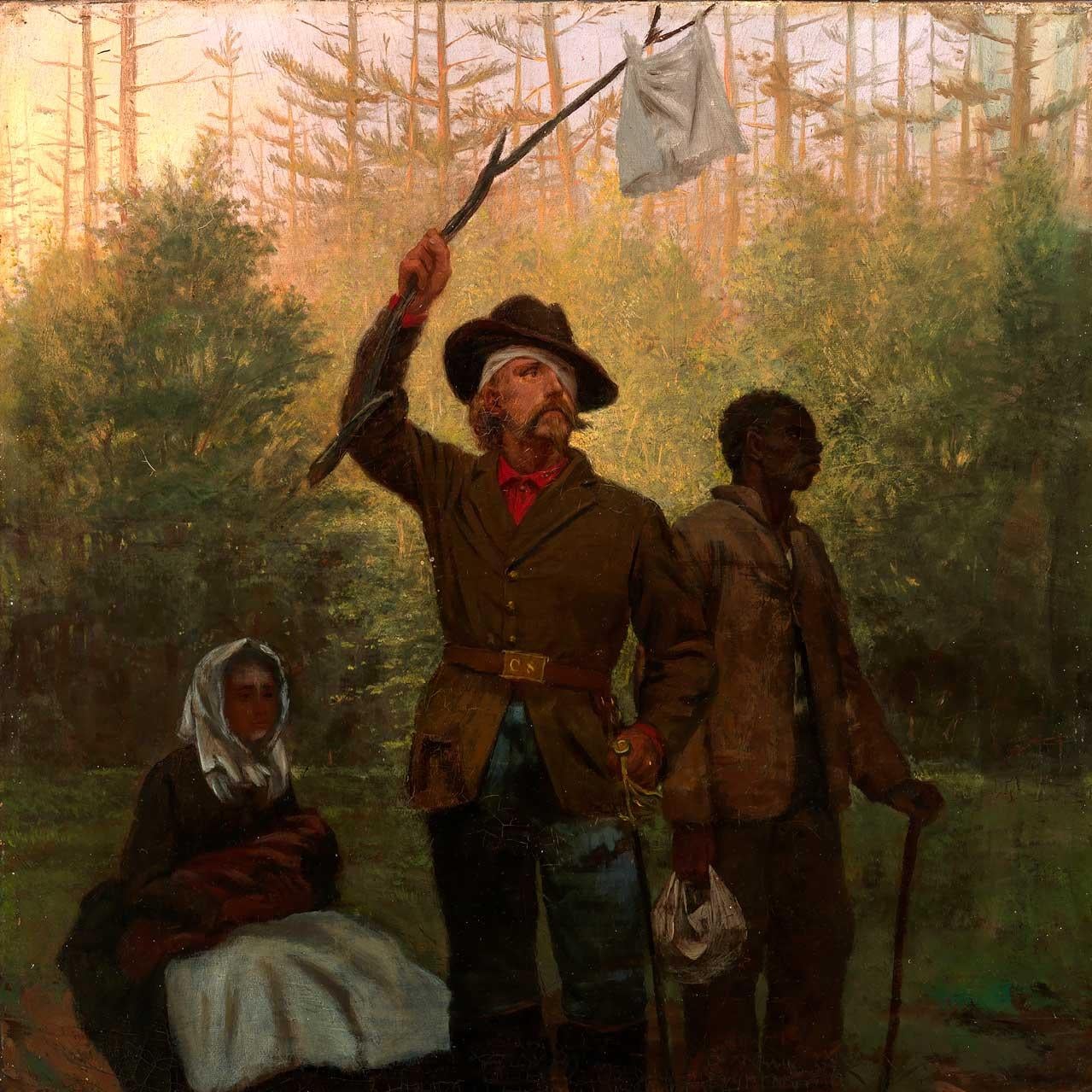
JULIAN SCOTT, SURRENDER OF A CONFEDERATE SOLDIER, 1873, OIL ON CANVAS, CREDIT: SMITHSONIAN AMERICAN ART MUSEUM
Scott, at only the age of 16, earned his Medal of Honor by repeatedly braving the volleys of Confederate bullets in order to carry or drag back as many wounded soldiers as he could. His actions were noted by Gen. William F. Smith who decided that Scott’s fortitude was deserving of recognition. Three years later, in February 1865, Scott was awarded the Medal of Honor for his distinctive gallantry on the battlefield.
The recommendation submitted for Scott's medal – authored by Lt. Col. Wheelock G. Veazey – noted his courageous actions as follows: “Julian Scott Fifer, Gallant conduct at Lee’s Mills, April 16, 1782, displayed in crossing the creek under a terrific fire of musketry several times to assist in bringing off the wounded. Recommended for a Medal of Honor.”
With the war concluded, Scott crossed the Atlantic Ocean and trekked through Europe as an artist. He eventually settled in Paris for several years while he studied under the legendary painter Emanuel Leutze, who is known largely for his painting Washington Crossing the Delaware. Often using famous American heroes and iconography as the subject of his work, Leutze paired perfectly with Scott. The Medal of Honor recipient was inspired by countless artists who captured the Civil War on canvas and used his own wartime experiences to fuel his earliest pieces. Scott depicted the lives of everyday soldiers, intense scenes of battle, as well as the peace and relief that came with the war’s end. The Vermont native’s 1872 "Battle of Cedar Creek" even hangs in the Vermont State House.
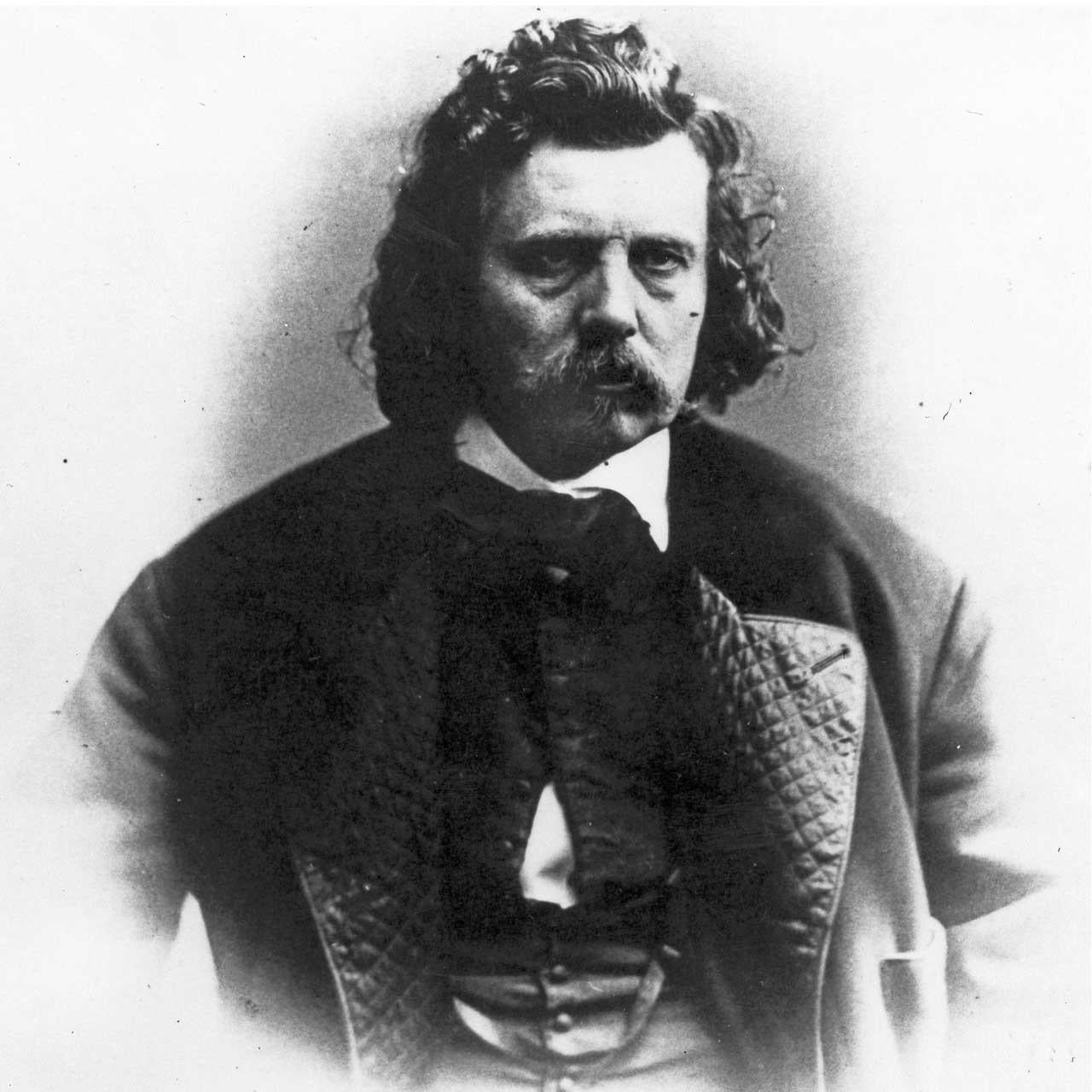
EMANUEL LEUTZE. CREDIT: WIKIMEDIA COMMONS
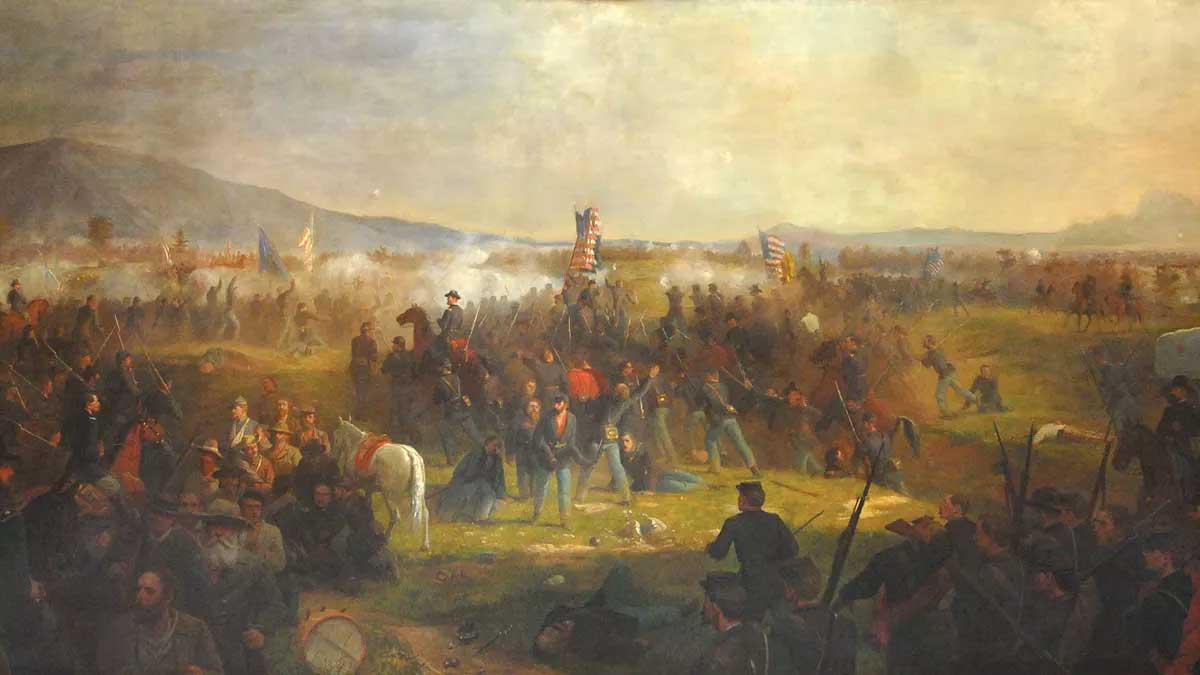
JULIAN SCOTT, THE BATTLE OF CEDAR CREEK, 1872, OIL ON CANVAS. CREDIT: VERMONT STATE CURATOR’S OFFICE
“I can trace you out as being foremost in all duties assigned to you, and running yourself into unnecessary danger for the love of danger.”
When Scott returned to America, he took up residence in New York City and, eventually, moved to Plainfield, New Jersey, in 1878. Stateside, he crafted the remainder of his works. Scott also went out west, acting as a special agent to a census party, to paint American landscapes and learn more about Native American culture in the modern-day states of Arizona, New Mexico and Oklahoma.
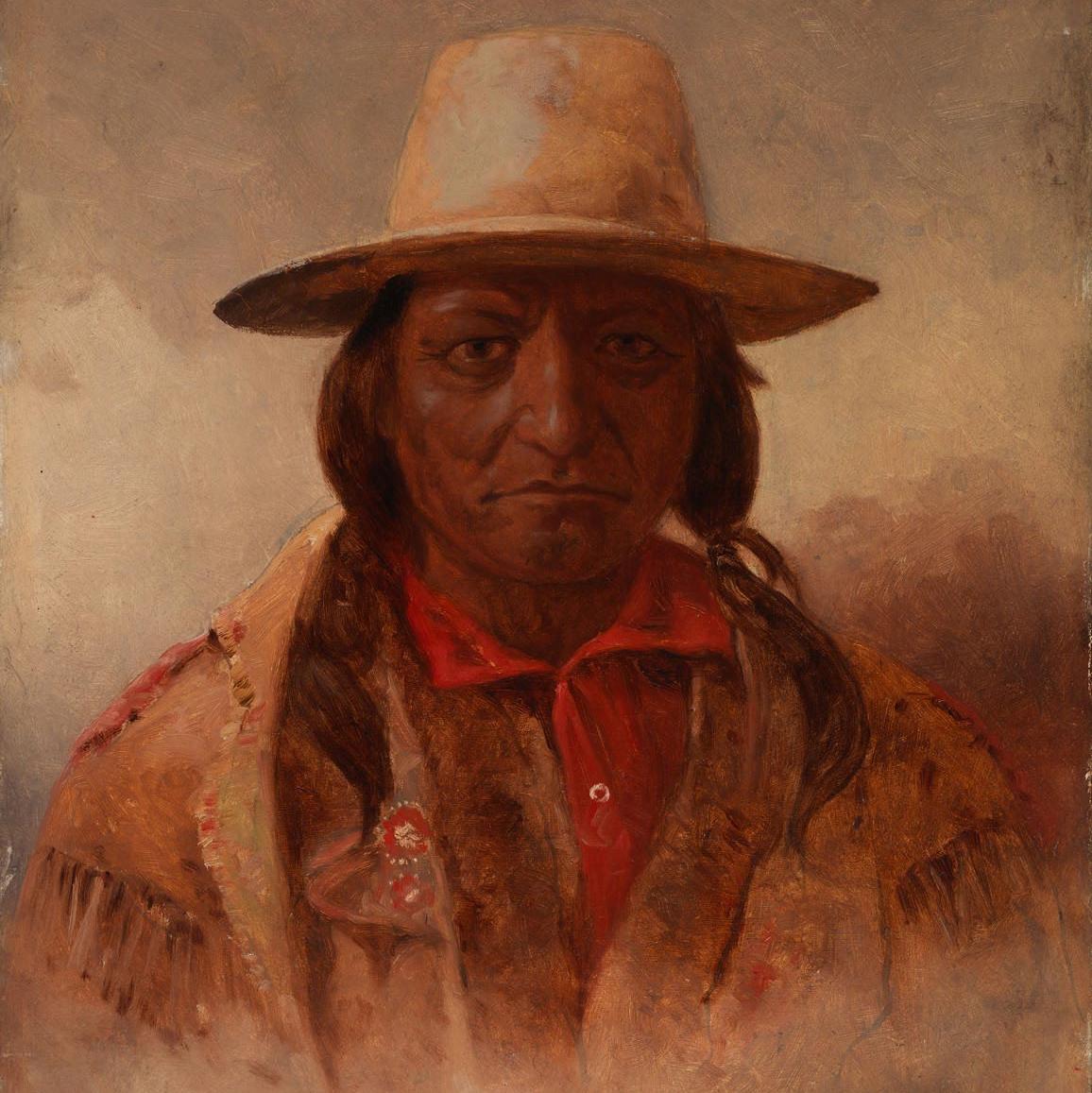
JULIAN SCOTT, SITTING BULL, N.D., OIL ON CANVAS, SMITHSONIAN AMERICAN ART MUSEUM
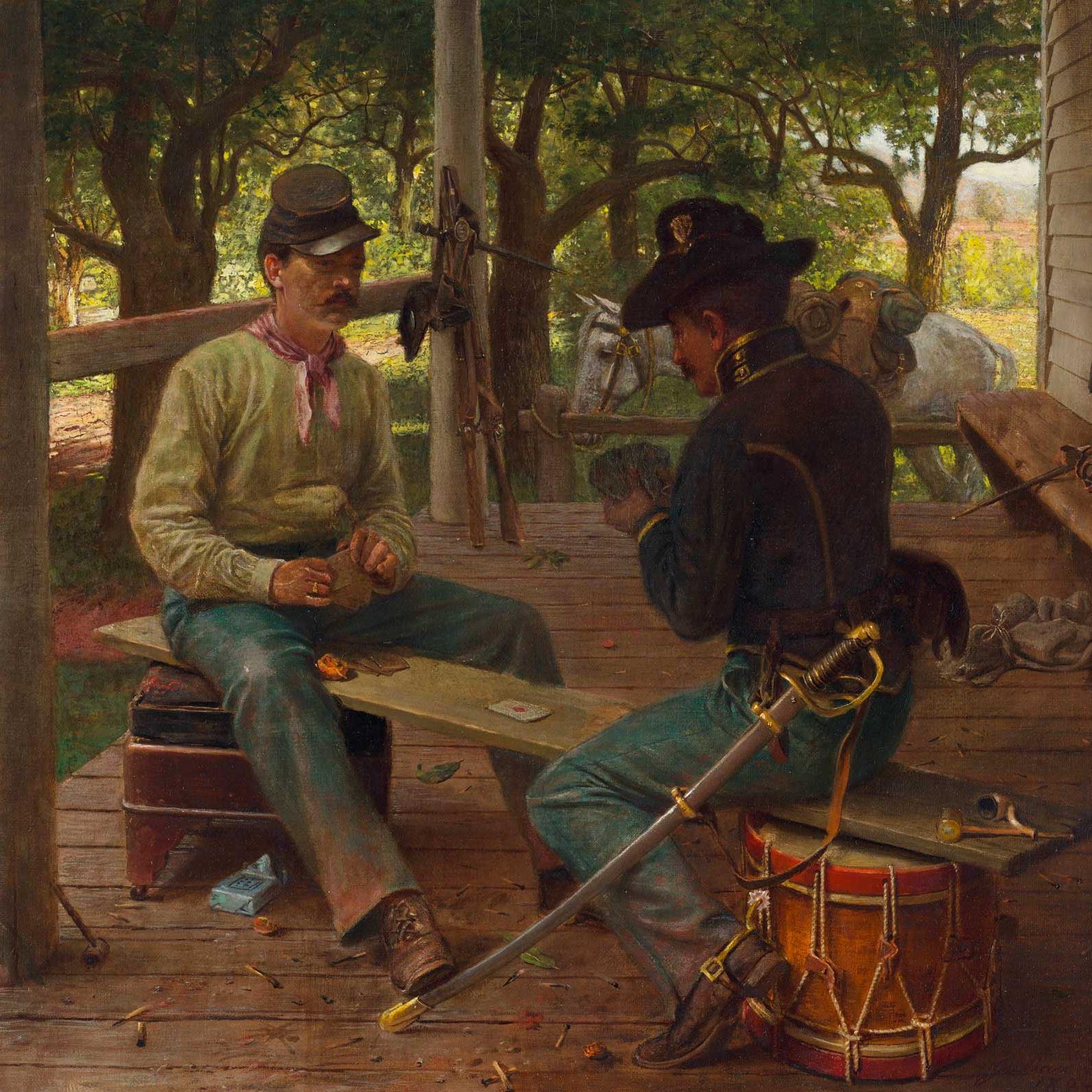
JULIAN SCOTT, A FRIENDLY GAME, 1894, OIL ON CANVAS. CREDIT: WIKIMEDIA COMMONS